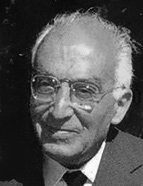

After presenting some of the milestones in SDA ’ s research career and work, we shall now consider his profile as a historian.
He began his university career in 1952 as a Second Assistant Professor at the School of Arts and Humanities of the University of Coimbra, joining a History group characterised by a historiography that, from a methodological point of view, was guided by the paradigm of the German methodical school, but that, from the point of view of the topics analysed, was not limited solely to the political and institutional. He was taught by Mário Brandão, M. Lopes de Almeida, Torquato de Sousa Soares, and Damião Peres. SAD began its academic career in the early 1950s with the medievalist Avelino de Jesus da Costa and the archaeologist João Manuel Bairrão Oleiro. In the words of António de Oliveira, the FLUC History Group was experiencing ‘the beginning of a time of new historians’, representing, in the words of this historian, ‘ the third generation’ of historians from the School of Arts and Humanities. Days looking at the future that would be marked in the 1960s by a consistent change in the way History was conceived and written, led by António de Oliveira, Jorge de Alarcão, Luís Ferrand de Almeida , and Silva Dias, historians who would have the pleasure of guiding young people who were already born for historical research in a time of freedom. A passion shared by Salvador Dias Arnaut. From the outset, he closely followed the two youngest assistants, João Lourenço Roque and Maria Helena da Cruz Coelho, who joined the School in the early 1970s, sharing his knowledge with them but also his zest for life.
It should be noted that SDA completed his degree in History, where he wrote his thesis on the Battle of Trancoso, in a decade marked by the celebration of the centenaries of the Foundation of Nationality and the Restoration of 1640 and, consequently, at a time of particular control over academic historiographical production. These were contradictory times. The War Academy was familiar with the European historiographical production brought by intellectuals who had arrived in Coimbra during the Second World War, such as Pierre David, or by foreign historians who had been invited to give lectures, such as Charles Verlinden, or to publish in a section of the Revista Portuguesa de História [Portuguese History Magazine] entitled National and Foreign Historiography.
This work is financed by national funds through FCT - Foundation for Science and Technology, I.P, in the scope of the projects UIDB/04311/2020 and UIDP/04311/2020.
